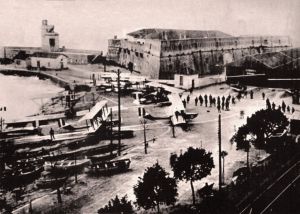It was 1913 when for the first time a seaplane landed in Sanremo.
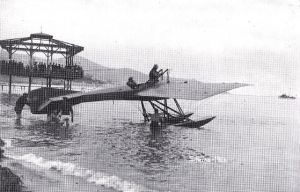 On the occasion of a sports exhibition sponsored by the Town Hall, the Public Holidays Committee and the Sanremese Sports Union, the French aviator Laurens, who came from Nice with the Viscount of Beauripaire on a Deperdussin he owned, moved into our skies and then onto our beaches to perform aerial evolutions even with passengers. Large posters had announced the possibility of paying flights, but nothing was done about it because of mechanical problems with the seaplane.
On the occasion of a sports exhibition sponsored by the Town Hall, the Public Holidays Committee and the Sanremese Sports Union, the French aviator Laurens, who came from Nice with the Viscount of Beauripaire on a Deperdussin he owned, moved into our skies and then onto our beaches to perform aerial evolutions even with passengers. Large posters had announced the possibility of paying flights, but nothing was done about it because of mechanical problems with the seaplane.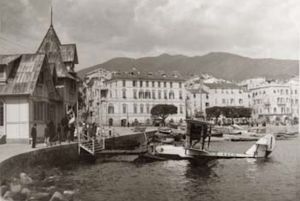
The interest in aviation, which was kept alive by frequent visits by aircraft, including military ones, was only rekindled in 1929 and directly involved the seaport. S.I.T.A.R. (Società di Intermediazione Turistica Aereo Riviera), which had put in the hangars, built during the First World War, a dozen seaplanes of the Breda, Caproni, Macchi 18 and S 36 type, and connected to the shore through a slide, still existing today, on which the tracks for the transport of the planes were placed.
In that very year he organised an air festival in which many seaplanes took part and after which Colonel De Bernardi also arrived in the city to design a Sanremo-Genoa-Munich line that could be used by flower exporters. Italo Balbo was also invited to Sanremo to make things big.
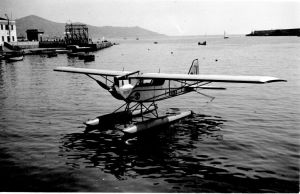 In reality the results obtained were more than modest. The planes actually arrived in Sanremo and were housed in the hangars of Pian di Nave (built during the First World War) but they were limited to an air taxi service and flights for extraordinary tasks or for Sunday tourism.
In reality the results obtained were more than modest. The planes actually arrived in Sanremo and were housed in the hangars of Pian di Nave (built during the First World War) but they were limited to an air taxi service and flights for extraordinary tasks or for Sunday tourism.
Occasionally there were also aerial shooting operations on the territory.
The seaplanes left Sanremo in 1934 and the hangars were shot down in 1936.
A project to provide Sanremo with air links, this time overland, was attempted by considering a large clearing located in Arma di Taggia and already used as a field for airships. The Municipality proposed a contribution of 2 million lire over 5 years. The project went wrong because of the war.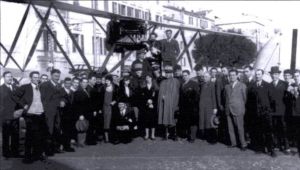 It was in those years that Colonel De Bernardi arrived to design a Sanremo-Genoa-Monaco di Baviera line that could be used by flower exporters.
It was in those years that Colonel De Bernardi arrived to design a Sanremo-Genoa-Monaco di Baviera line that could be used by flower exporters.
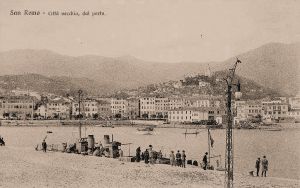 A torpedo boat can be seen on the quay. These ships often performed postal service.
A torpedo boat can be seen on the quay. These ships often performed postal service.
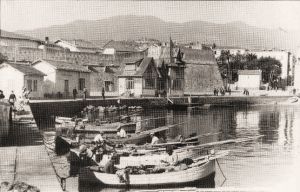 The Chalet of the S.I.T.A.R. offices later became the headquarters of the Naval League. Next to it is the building that housed the duty. Both buildings were destroyed in 1943 by German occupation troops.
The Chalet of the S.I.T.A.R. offices later became the headquarters of the Naval League. Next to it is the building that housed the duty. Both buildings were destroyed in 1943 by German occupation troops.
We are at the beginning of the First World War. German submarines scoured the Mediterranean Sea sinking the merchant ship.
The Supreme Command had two large sheds built in the area in front of Santa Tecla to house a dozen seaplanes which, armed with bombs, guard the sea along the coast between Ventimiglia and Albenga.
(From "Profumo di Salsedine" - M. Macchi ; "Storia di Sanremo" - A. Gandolfo)





